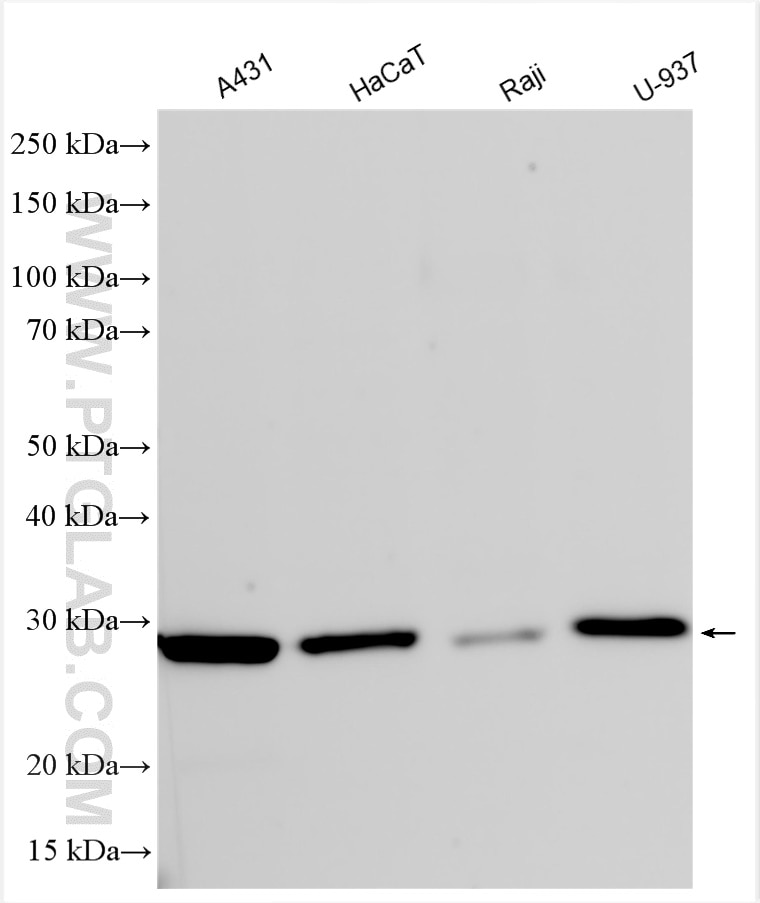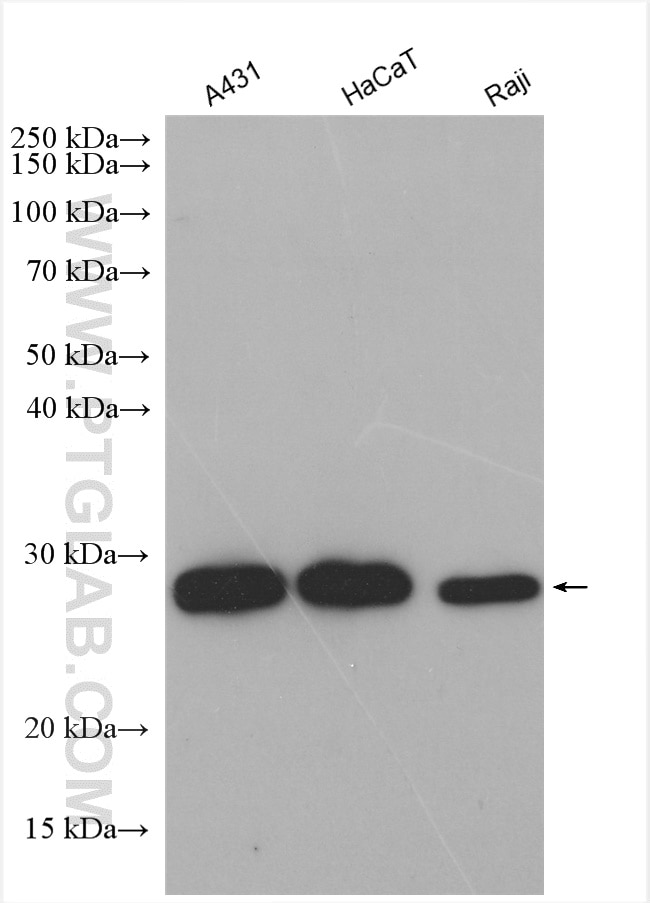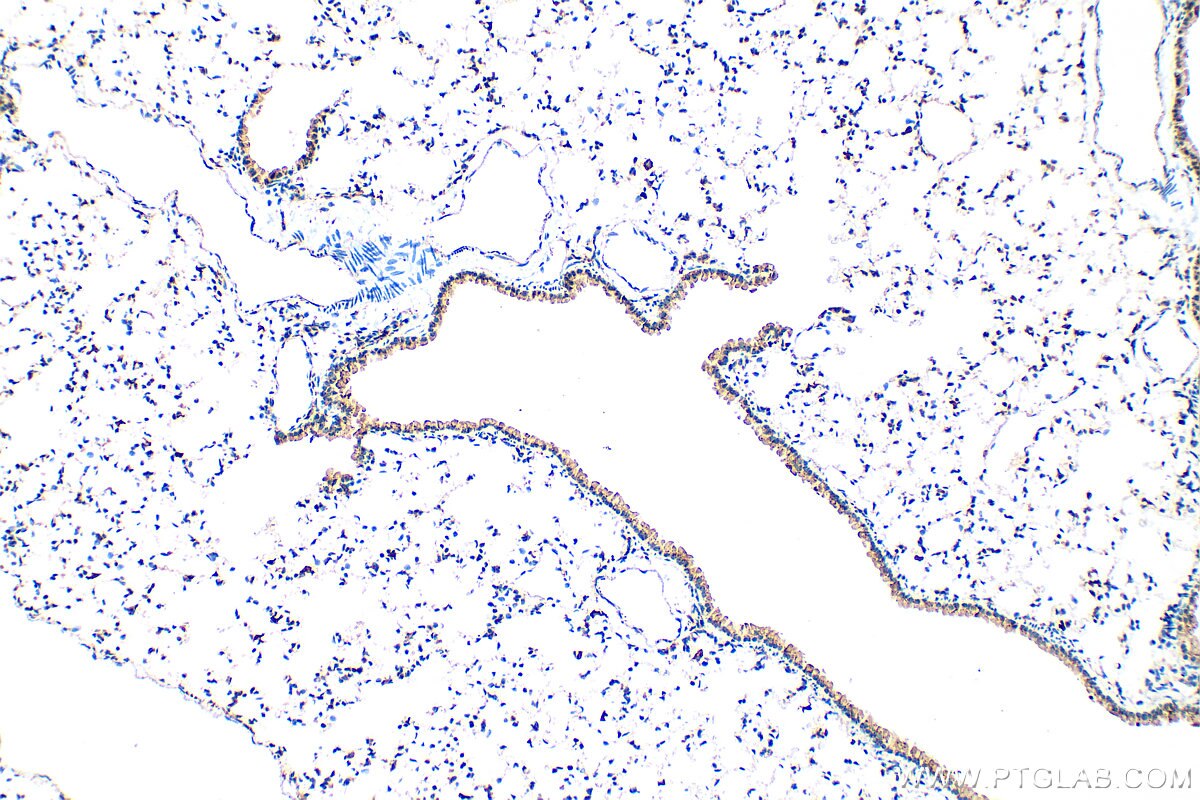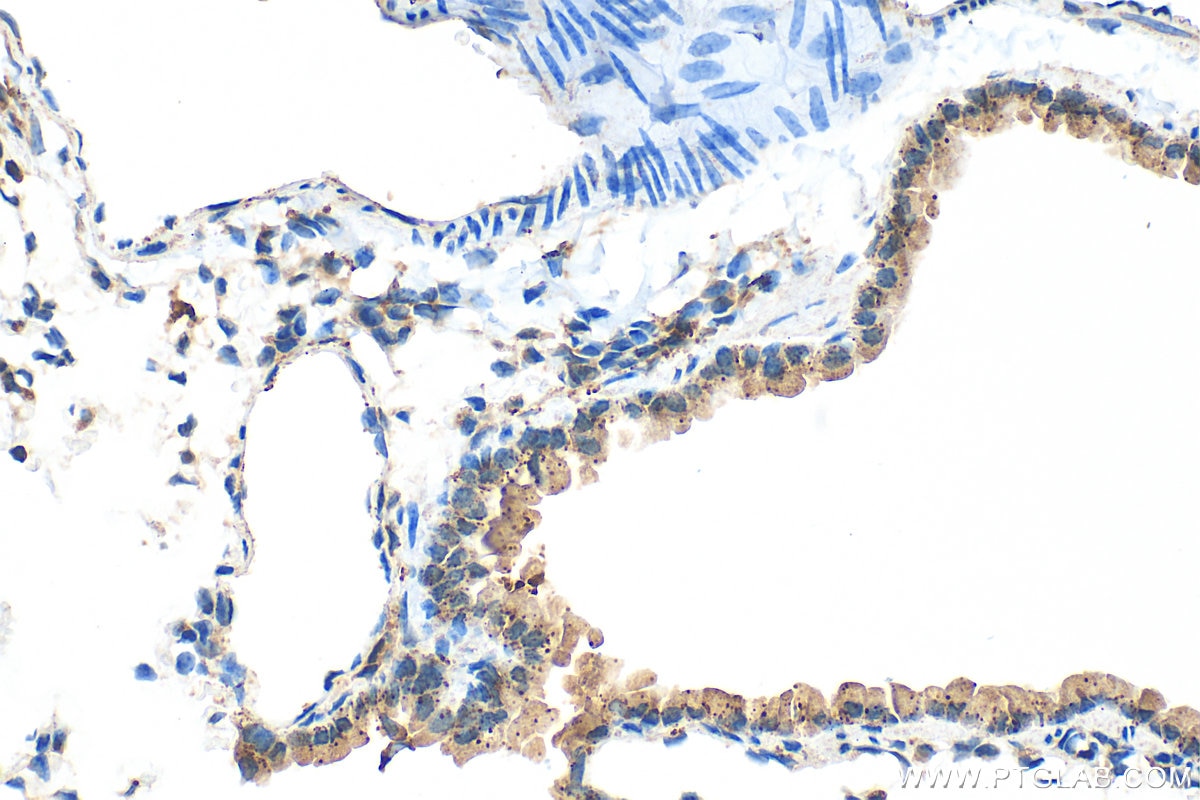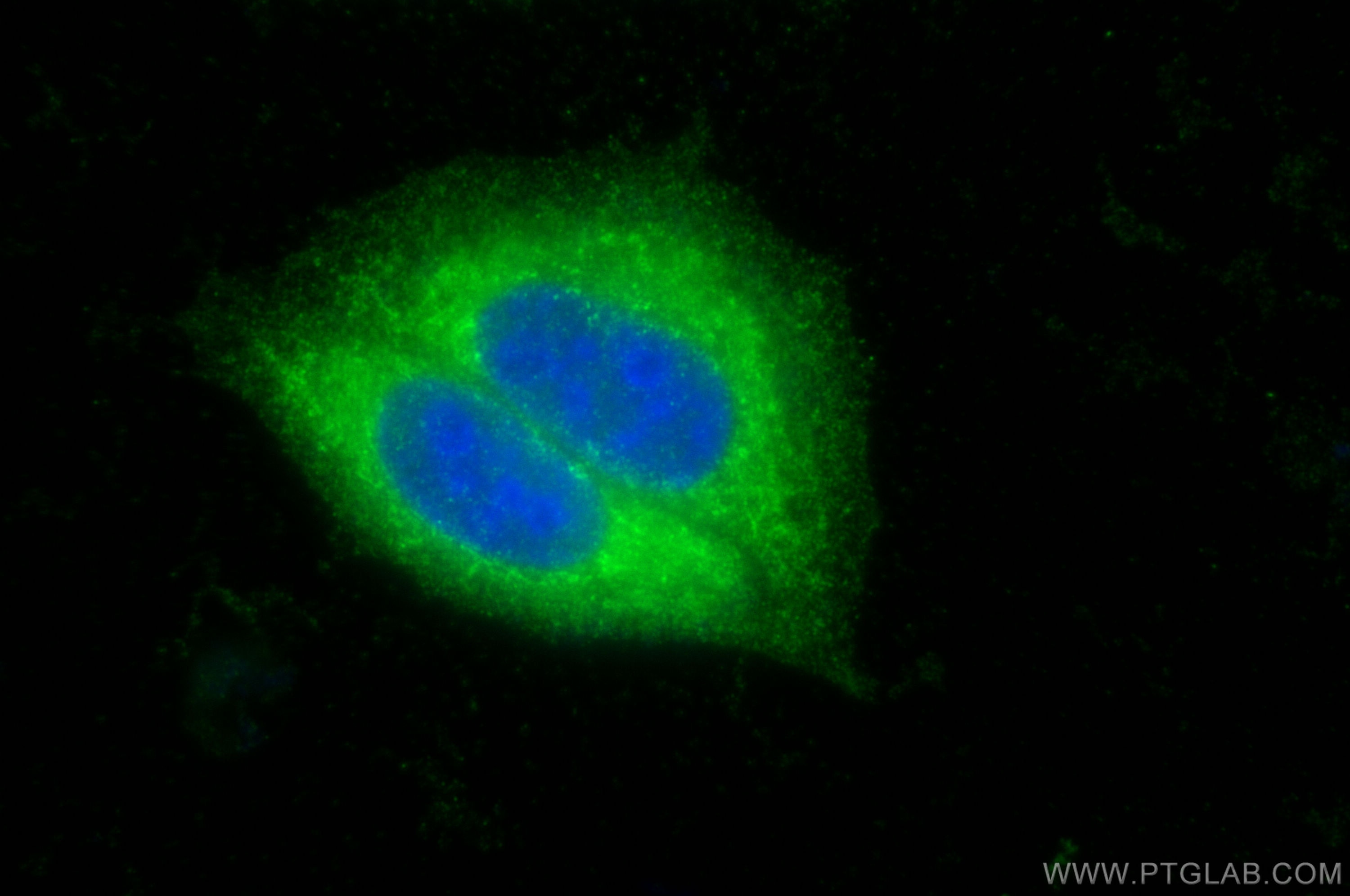Anticorps Polyclonal de lapin anti-Cathepsin H
Cathepsin H Polyclonal Antibody for WB, IHC, IF/ICC, ELISA
Hôte / Isotype
Lapin / IgG
Réactivité testée
Humain, rat, souris
Applications
WB, IHC, IF/ICC, ELISA
Conjugaison
Non conjugué
N° de cat : 10315-1-AP
Synonymes
Galerie de données de validation
Applications testées
| Résultats positifs en WB | cellules A431, cellules HaCaT, cellules Raji, cellules U-937 |
| Résultats positifs en IHC | tissu pulmonaire de souris, il est suggéré de démasquer l'antigène avec un tampon de TE buffer pH 9.0; (*) À défaut, 'le démasquage de l'antigène peut être 'effectué avec un tampon citrate pH 6,0. |
| Résultats positifs en IF/ICC | cellules HepG2, |
Dilution recommandée
| Application | Dilution |
|---|---|
| Western Blot (WB) | WB : 1:1000-1:6000 |
| Immunohistochimie (IHC) | IHC : 1:500-1:2000 |
| Immunofluorescence (IF)/ICC | IF/ICC : 1:200-1:800 |
| It is recommended that this reagent should be titrated in each testing system to obtain optimal results. | |
| Sample-dependent, check data in validation data gallery | |
Applications publiées
| WB | See 3 publications below |
| IHC | See 3 publications below |
| IF | See 1 publications below |
Informations sur le produit
10315-1-AP cible Cathepsin H dans les applications de WB, IHC, IF/ICC, ELISA et montre une réactivité avec des échantillons Humain, rat, souris
| Réactivité | Humain, rat, souris |
| Réactivité citée | rat, Humain, souris |
| Hôte / Isotype | Lapin / IgG |
| Clonalité | Polyclonal |
| Type | Anticorps |
| Immunogène | Cathepsin H Protéine recombinante Ag0361 |
| Nom complet | cathepsin H |
| Masse moléculaire calculée | 41 kDa, 28 kDa |
| Poids moléculaire observé | 28, 41 kDa |
| Numéro d’acquisition GenBank | BC002479 |
| Symbole du gène | Cathepsin H |
| Identification du gène (NCBI) | 1512 |
| Conjugaison | Non conjugué |
| Forme | Liquide |
| Méthode de purification | Purification par affinité contre l'antigène |
| Tampon de stockage | PBS with 0.02% sodium azide and 50% glycerol |
| Conditions de stockage | Stocker à -20°C. Stable pendant un an après l'expédition. L'aliquotage n'est pas nécessaire pour le stockage à -20oC Les 20ul contiennent 0,1% de BSA. |
Informations générales
Cathepsin H (CTSH, synonyms: CPSB, MGC1519, minichain) is a lysosomal cysteine proteinase important in the overall degradation of lysosomal proteins. It is composed of a dimer of disulfide-linked heavy and light chains, both produced from a single protein precursor. This protein, which belongs to the peptidase C1 protein family, can act both as an aminopeptidase and as an endopeptidase. Increased expression of this gene has been correlated with malignant progression of prostate tumors.Cathepsin H is a unique member of the cysteine cathepsins that acts primarily as an aminopeptidase. Like other cysteine cathepsins, it is synthesized as an inactive precursor and activated by proteolytic removal of its propeptide. In human cells, Cathepsin H exists an autocatalytic form, proceeding from an inactive 41 kDa pro-form, through a 30 kDa intermediate form, to the 28 kDa mature form (PMID: 22704610).
Protocole
| Product Specific Protocols | |
|---|---|
| WB protocol for Cathepsin H antibody 10315-1-AP | Download protocol |
| IHC protocol for Cathepsin H antibody 10315-1-AP | Download protocol |
| IF protocol for Cathepsin H antibody 10315-1-AP | Download protocol |
| Standard Protocols | |
|---|---|
| Click here to view our Standard Protocols |
Publications
| Species | Application | Title |
|---|---|---|
Cell Rep Med Distinct immune microenvironment of lung adenocarcinoma in never-smokers from smokers | ||
Oncogene Cathepsin H regulated by the thyroid hormone receptors associate with tumor invasion in human hepatoma cells. | ||
Microscopy (Oxf) Histochemical examination on principal collagen fibers in periodontal ligaments of ascorbic acid-deficient ODS-od/od rats. | ||
Front Pediatr Impaired FGF10 Signaling and Epithelial Development in Experimental Lung Hypoplasia With Esophageal Atresia. | ||
Nature Anti-tumour immunity controlled through mRNA m6A methylation and YTHDF1 in dendritic cells. | ||
J Inflamm Res Identifying and Validating Extracellular Matrix-Related Gene CTSH in Diabetic Foot Ulcer Using Bioinformatics and Machine Learning |
